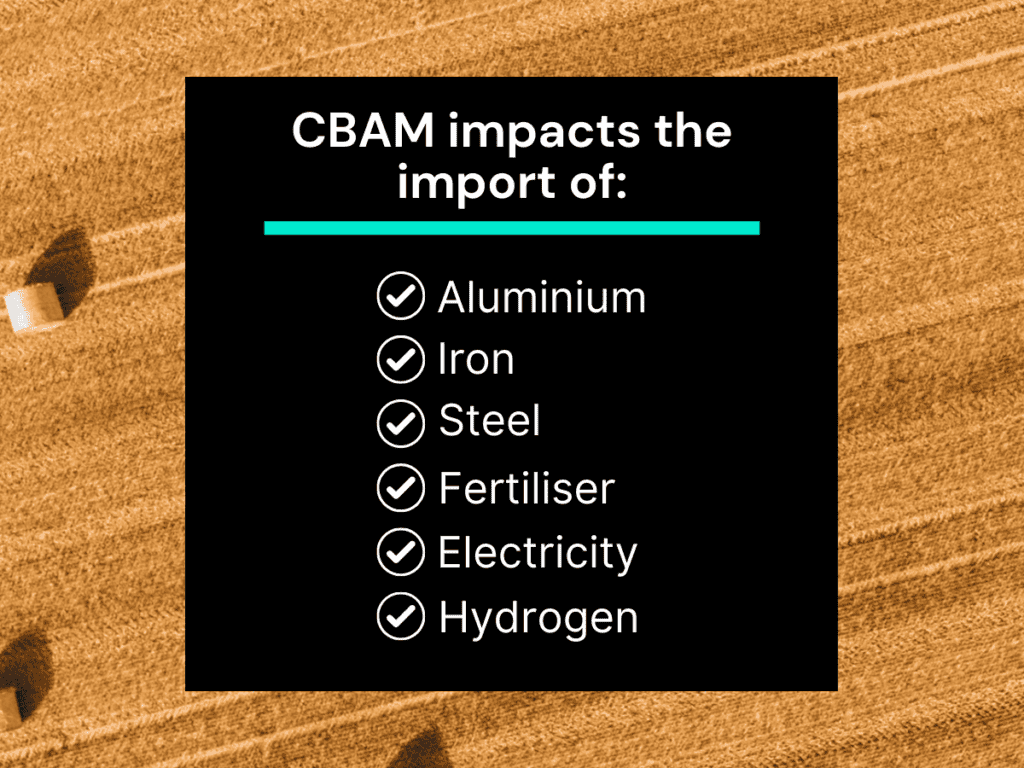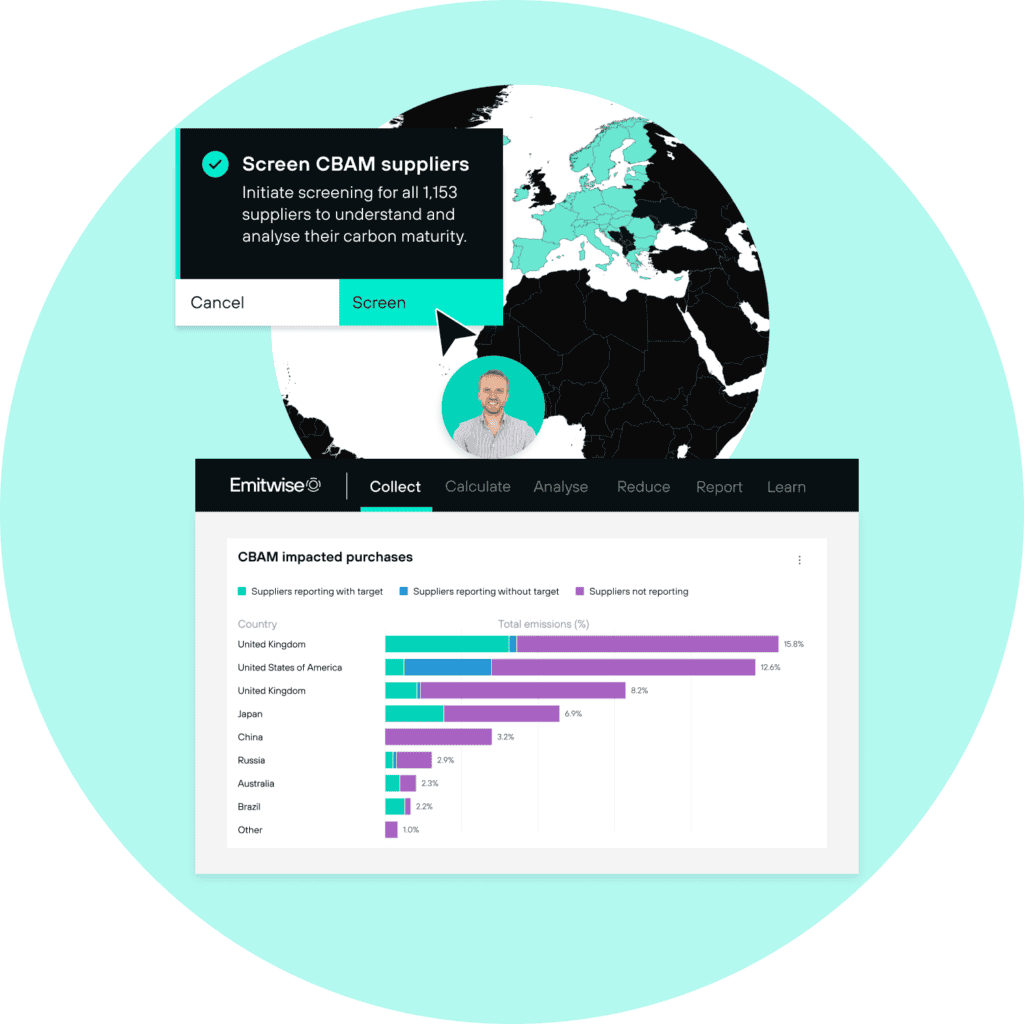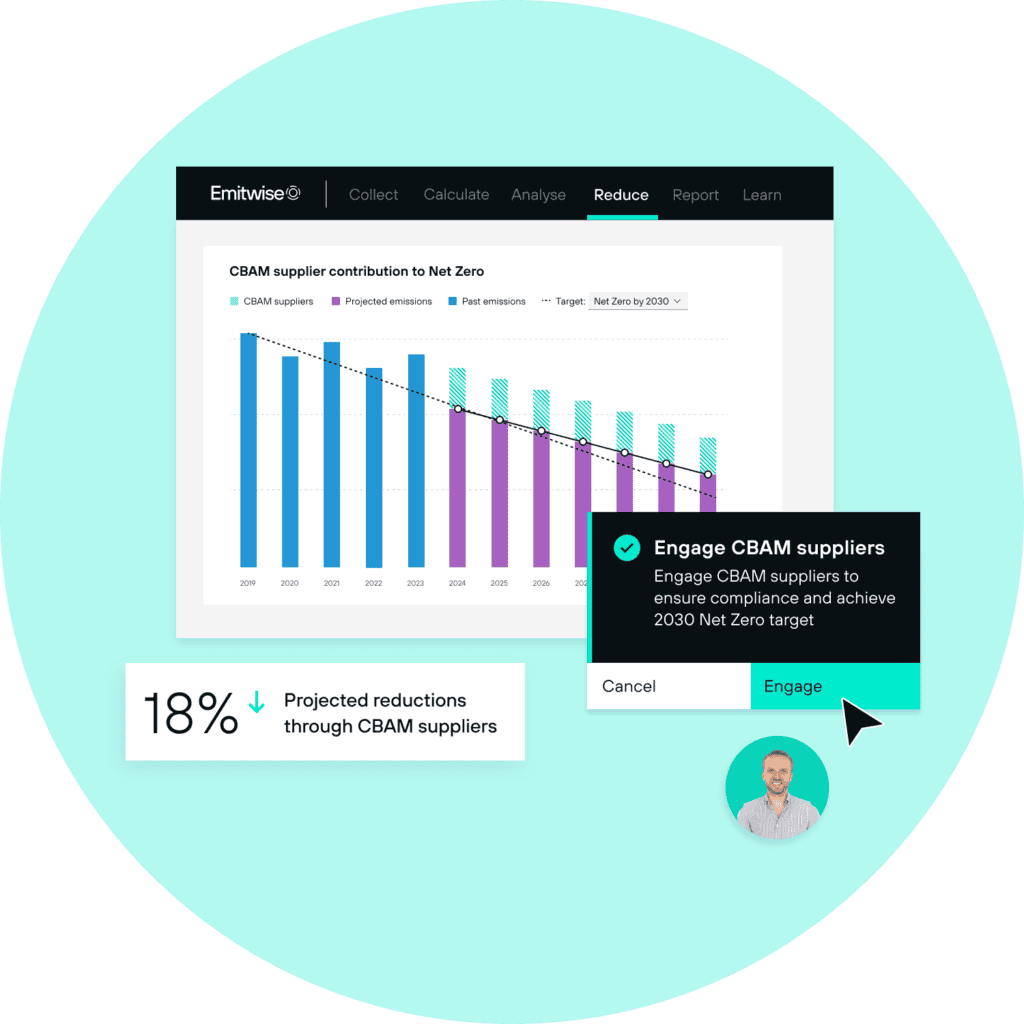What is CBAM?
The Carbon Border Adjustment Mechanism (CBAM) is a new European Union regulation that prices emissions embedded in goods imported into the EU.
It requires affected companies to report emissions arising from their imports and purchase special emission allowances, known as CBAM certificates, for those emissions.
Through this mechanism, it levels the playing field for European businesses and encourages other countries to reduce their emissions in line with the EU’s targets.
The first step for companies importing goods from outside the EU is to understand which suppliers are subject to CBAM’s new reporting requirements.

Greenhouse gas emissions data for these products must be collected from suppliers, reviewed, and summarised by the importing company in a CBAM submission.
The origin of the product must be stated alongside an analysis that encapsulates both the direct and indirect emissions associated with the imported items.

Learn more about CBAM from our expert team

CBAM is elevating the EU ETS
CBAM aligns with the European Union’s ambitions to reduce its emissions by 55% by 2030 and reach carbon neutrality by 2050. To this end, the EU Emissions Trading System (EU ETS) was launched in 2005 to price greenhouse gas emissions and incentivise reductions.
The EU ETS is a “cap and trade” system that sets a maximum amount of greenhouse gases that can be emitted over a certain period and allows companies covered by this system to receive, purchase, and trade emission allowances.
One of the main limitations of the EU ETS was “carbon leakage”, whereby EU companies pricing their emissions would lose competitiveness with goods imported from abroad that were not subject to the same carbon pricing.
CBAM reduces the risk of companies transferring their production to countries outside of the EU, levels the playing field for suppliers exporting goods into the EU and encourages companies to decarbonise in line with European targets.

How Emitwise gets your supply chain CBAM ready
Understand the impact

Identify purchases from outside the EU that fall in product categories relevant to CBAM reporting.
This is the first step in flagging suppliers you need to engage on your journey to reporting and complying with CBAM.
Evaluate supplier maturity

Through Procurewise, conduct a supplier screening to evaluate the sustainability maturity of your suppliers.
Send data submission requests to your suppliers and collect detailed information on their direct and indirect emissions.
Improve supplier maturity

Support to help your suppliers move forward in their sustainability journey.
Leveraging Emitwise’s emissions baseline calculator can give your suppliers a head start as they prepare for CBAM’s requirements.
PREPARE FOR CBAM
Are you and your suppliers impacted by CBAM?
Meet with an Emitwise expert to explore how your company and your supply chain can meet CBAM’s requirements.